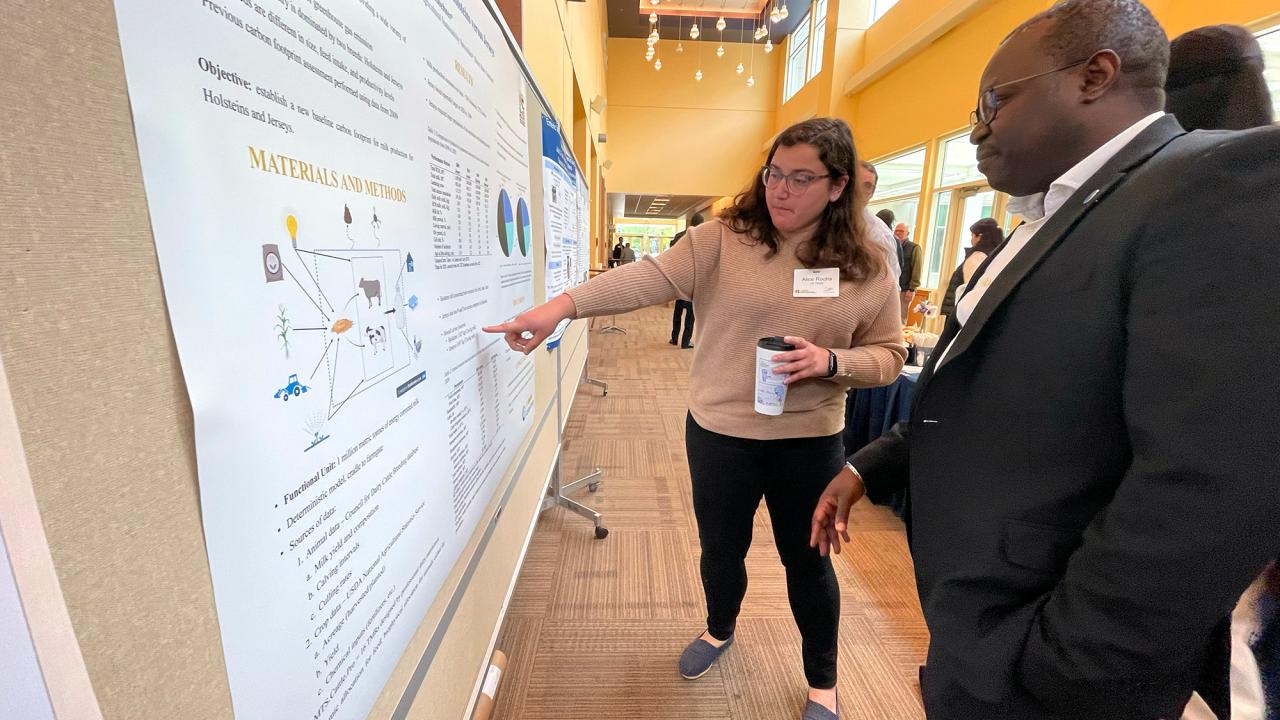
State of the Science Summit: Seven things you don’t have to be a science whiz to wrap your head around
UC Davis hosted a summit with the CDFA focused on enteric methane in livestock
The audience and presenters at the State of the Science Summit held May 2 and 3 at University of California, Davis repped training, degrees, experience, resumes and IQ points worth writing home about. For what may well be the first time, federal and state government agencies, sustainability organizations, scientists, academics and farmers came together to discuss how to make animal agriculture more sustainable by reducing enteric emissions.
And although the topic is a complicated one, you don’t have to be a science whiz to grasp a meaty list of messages about making animal agriculture less (greenhouse) gassy.
Here’s a sampling of what we learned. We’re sharing it because it’s important, and in some cases, it’s just cool to know.
- Most methane from animals comes from the front not the back. Despite the fact that farts can be funny, about 95% of the methane emitted directly by the animal is in the form of burps – not toots. It’s called enteric emissions, and we currently have no effective way to curb it worldwide.
- Cows are buggy beasts. Cows’ guts are home to roughly 1 quadrillion (that’s 15 zeros!) bacteria of myriad types, and only 20% of them can be replicated in a lab. That makes it challenging to know how cows’ digestion will be affected by an additive or change in feed that affects just one of the many species. We need research – and lots of it – to figure that out.
- California dreamin’. The Golden State is the leader in dairy production, not just in productivity but in work on sustainability issues. In addition, California has the most ambitious climate goals in the United States, if not the world. However, look for others to follow suit. Our clock is ticking.
- Animals can pull their weight. Animal agriculture plays a relatively small part in greenhouse gas emissions compared to other industries, but the sector is nevertheless working at finding ways to lighten the load. California has tasked animal agriculture with a 40% methane reduction by 2030, a significant cut University of California, Davis’ Frank Mitloehner says is doable.
- She won’t eat it! Experts agree it won’t be possible to hit the 40% target without finding ways to cut down on enteric emissions. Feed additives designed to keep cows from creating – and thus burping – as much methane are showing great progress, but we’re not there yet. It’s a complex situation that requires research and study for effectiveness, safety, availability and even taste. Yes, cows can be picky eaters.
- Safety first. We have a critical need to reduce greenhouse gas emissions – largely methane – in animal agriculture, but no one believes that should ever happen in a way that compromises the safety and well-being of the animals – the four-legged ones and us too.
- We’re in this together. No single person created global warming, and no individual or entity can fix it. We need to reach across the aisles – and every other divide that puts us in a silo – and join forces with everyone who plays a role in our food system.
You can read more about the State of the Science Summit in Forbes.
